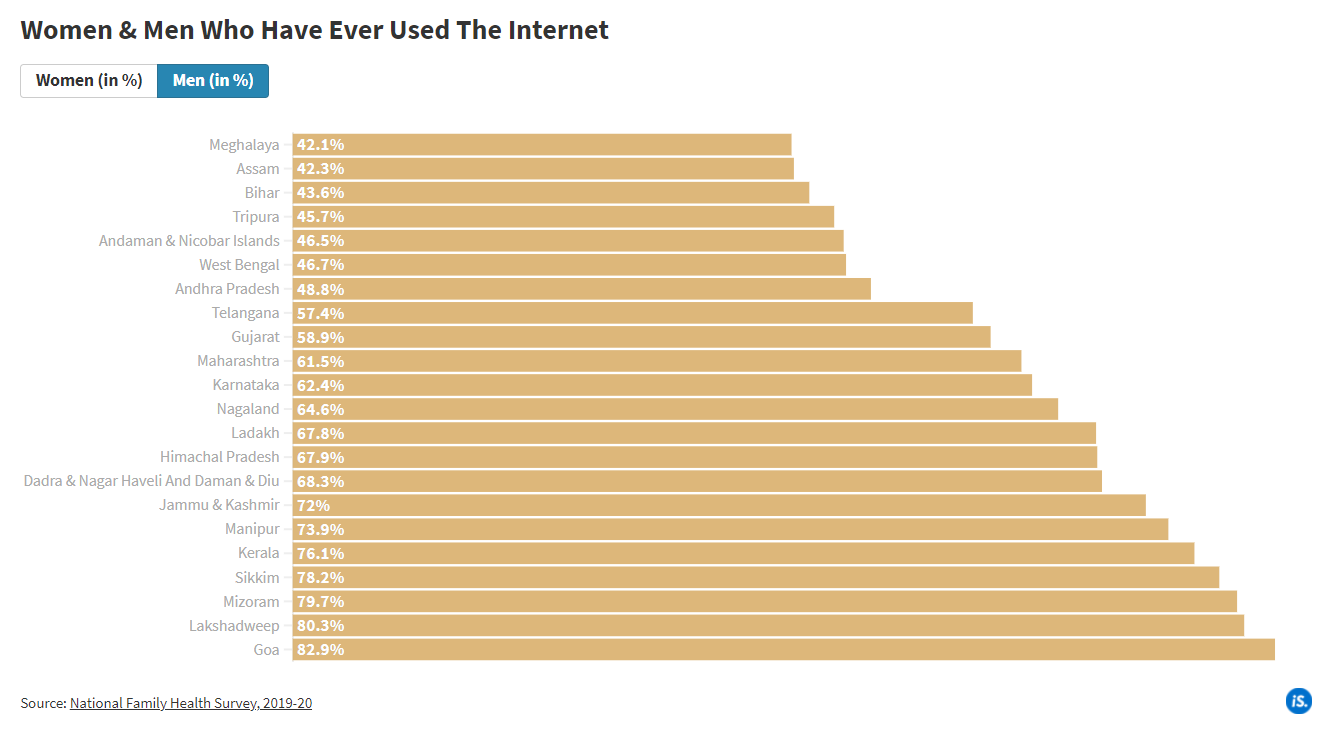Mobile phones are universal in today’s place and time. Men, women, teens, and children in some cases, all are stuck to their devices all of their waking hours.
According to new data by the National Family Health Survey, there is a vast difference between the usage of the Internet by men and women in India. Of the 28 states and eight Union Territories, research on Internet usage was conducted in 17 states and five Union Territories the survey conducted by the government of India highlights the discrepancy among internet users in India.
As per the survey, several states in the country have an exceptionally low rate of women using the internet, as low as 20% in a particular case.

Conducted the previous year, the fifth National Family Health Survey (NFHS) posed an issue to the respondents whether they had ever used the internet. With part data from the survey disclosed under the Yearly Performance Indicators of Indian Telecom Sector – 2019, Bihar documented the lowest percentage of women (20.6%) who verified using the Internet ever.
On the contrary, Sikkim noted the highest percentage of women internet users at 76.7%. As for men, Meghalaya documented the lowest count (42.1%), while Goa had the highest at 82.9%.

The census also carried a question from its last iteration that particularly inquired women respondents if they had a mobile phone and whether they could go over an SMS on it. As per the data reported by the fourth NFHS (2015-16), 45.9% of women in India had a private mobile phone at the time. Two-thirds of this number verified that they could read messages on it.
This year, NFHS data documented from 22 states indicated an improvement in the number of women mobile phone users in the country. Goa reported the biggest percentage of women cellphone users at 91.2%. The poorest percentage (48.8%) was noted in Gujarat, significantly up from the last time’s lowest of 36.2% recorded in Andhra Pradesh.
The fourth NFHS had indicated at the trend related to mobile phone ownership among women. It reported that the ownership went up with age, while the proficiency to read messages lessened with age. Both the factors boosted in urban areas with a boost in wealth.
The questions were comprised in the “women’s empowerment” category in the survey.
The category also asked other questions such as “whether the women were a part of household decisions, had a bank account, acquired land and how they got paid”
Also, read:
















